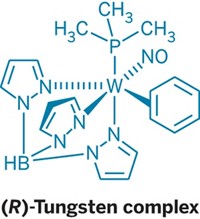Advertisement
Grab your lab coat. Let's get started
Welcome!
Welcome!
Create an account below to get 6 C&EN articles per month, receive newsletters and more - all free.
It seems this is your first time logging in online. Please enter the following information to continue.
As an ACS member you automatically get access to this site. All we need is few more details to create your reading experience.
Not you? Sign in with a different account.
Not you? Sign in with a different account.
ERROR 1
ERROR 1
ERROR 2
ERROR 2
ERROR 2
ERROR 2
ERROR 2
Password and Confirm password must match.
If you have an ACS member number, please enter it here so we can link this account to your membership. (optional)
ERROR 2
ACS values your privacy. By submitting your information, you are gaining access to C&EN and subscribing to our weekly newsletter. We use the information you provide to make your reading experience better, and we will never sell your data to third party members.
Environment
Purifying Fluoropolymer Building Blocks
Host-guest chemistry and crystallization used to separate and purify industrially-useful fluorinated monomers
by Rachel A. Petkewich
March 16, 2009
| A version of this story appeared in
Volume 87, Issue 11

Host-guest chemistry and crystallization may be practical for separating and purifying industrially useful fluorinated monomers. α,ω-Diiodoperfluoroalkanes (DIPFAs), for example, are key intermediates for products such as fluorinated elastomers, but there is no high-yield method for purifying them. Now, Pierangelo Metrangolo of the Politecnico di Milano, in Italy, and colleagues demonstrate that organic salts known as bis(trimethylammonium) alkane diiodides can act as hosts, reversibly encapsulating DIPFAs via a selective reaction between the former's iodide anions and the latter's terminal iodine substituents (Science 2009, 323, 1461). The researchers added dissolved, size-matched ionic salts to mixtures of DIPFAs and found that specific salts could crystallize particular DIPFAs from solution or vapor. Heating releases the purified DIPFAs. The team confirmed that matching the size of the host cavity to the guest DIPFA is critical to selectivity by conducting competitive experiments. Four commercially available DIPFAs were dissolved in solution with one host salt, and only the DIPFA that matched the size of the cavity in the salt was encapsulated. The researchers suggest that this method may also be useful for purifying other intermediates such as α,ω-diiodoperfluoropolyethers.




Join the conversation
Contact the reporter
Submit a Letter to the Editor for publication
Engage with us on Twitter